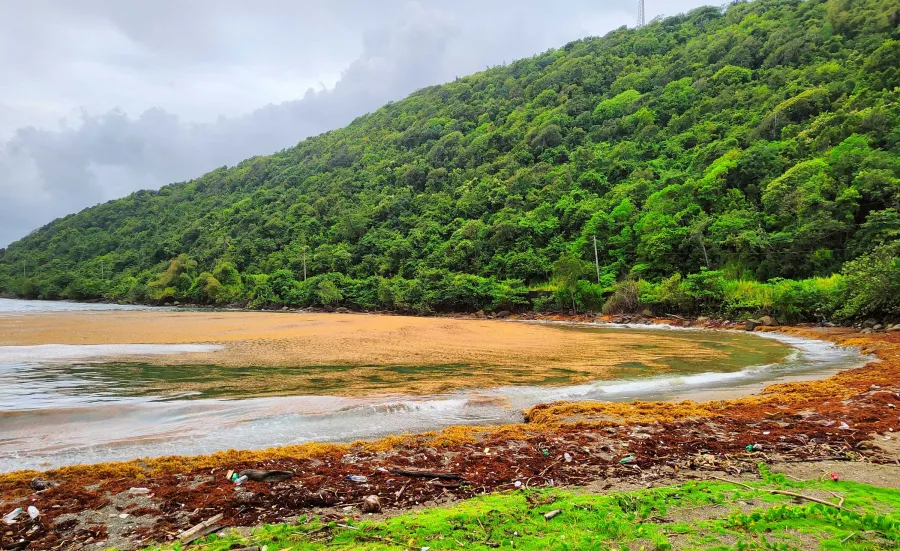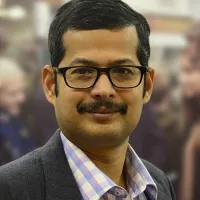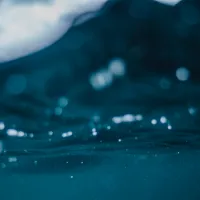When a huge mass of sargassum seaweed washes up at the coastline, it can damage a local economy in minutes. Without warning, boats are trapped at sea or on land, fishing nets are clogged with seaweed and beaches are inaccessible, affecting important industries such as tourism.
This nuisance species of seaweed washing up is causing devastation to Caribbean islands and the shores of Central America and West Africa. Worse, it is destabilising communities and fuelling conspiracy theories about where it suddenly comes from and why.
“It is not a new species,”explains Jadu Dash, Professor of Remote Sensing at the University of Southampton, “but what we’ve seen in the last 14 years or so are big masses beaching along the coastline.”
14 years ago, sargassum was barely seen on the coast. But, in 2010, a rare cold winter in the Atlantic pushed these oceanic seaweeds – which live and reproduce drifting on the sea surface – down towards the Caribbean Sea. There they are thriving and reproducing fast.
“It seems that warm seas and an abundance of nutrients mean sargassum is flourishing in the tropical Atlantic,” Emma Tompkins, Southampton’s Professor of Geography, Environment and Development.
There are two big problems for towns and villages in these regions: predicting when the sea will dump sargassum on their shores; and what to do with the sargassum when it arrives. Now the University of Southampton’s experts in data analytics and geography have joined colleagues in Ghana, Barbados, Jamaica and Mexico to find answers to those increasingly urgent questions.
When the mass comes in, it can be the size of five or six football pitches
Professor Jadu Dash
Gathering data from satellites and other ocean-monitoring systems, researchers are now able to track the movement of the seaweed around the oceans. Using that information, they have set up a reliable alert system for Jamaica, giving them up to five days’ notice that an influx of sargassum is on its way.
But in West Africa, useable data has been harder to find. Cloud cover over the coast reduces the quality of satellite images, meaning the sargassum is harder to spot. Instead, researchers have worked with school children who are taking their own pictures of the beaches using mobile phones, spotting and tracking the sargassum when it arrives and helping to build a dataset that predicts patterns that local people can use to predict this and prepare themselves.
“In western Ghana we’ve found two peak sargassum seasons, one in April and another in August and September. That information alone helps the people who fish the seas,” says Emma.
Predicting when it arrives is only half the battle. Helping poor communities dispose of this natural material in a useful way is just as important. Many governments cannot afford to continuously clear beaches, so local people have to act themselves to keep their economies open.
Researchers from Southampton, York and Jamaica tested the material to see what practical use it could be put to. They found that sargassum can be used as a fertiliser for important crops – tomatoes and peppers – and also to stimulate the growth of mangrove forests at the sea’s edge. Both are crucial for supporting the affected region’s economy and improving food security. Strong mangroves protect agriculture and housing against storms and flood damage from salt water from the ocean; this is more important than ever given the ravages of climate change in the region.
Emma says the school children who are mapping the arrival of seaweed in West Africa and Jamaica are learning more about it and are watching these test projects as they prepare to become “the next generation of sargassum entrepreneurs”.
With little local or state government support to deal with sargassum in most countries, it is up to the people who live there to protect their growing economies. The research team, led by Southampton, is finding ways to turn a blight into a boom for these nations’ small coastal communities – and teaching the rest of the world how to deal with nuisance seaweeds at the same time. This important strategic research project was made possible due to seed funding from the Southampton Marine and Maritime Institute, SMMI, which enabled the initial project to ‘get off the ground’ and for the team to then build a strong interdisciplinary proposition and successfully apply for larger grants.
We are focusing on opportunities for the poorest affected communities
Professor Emma Tompkins






